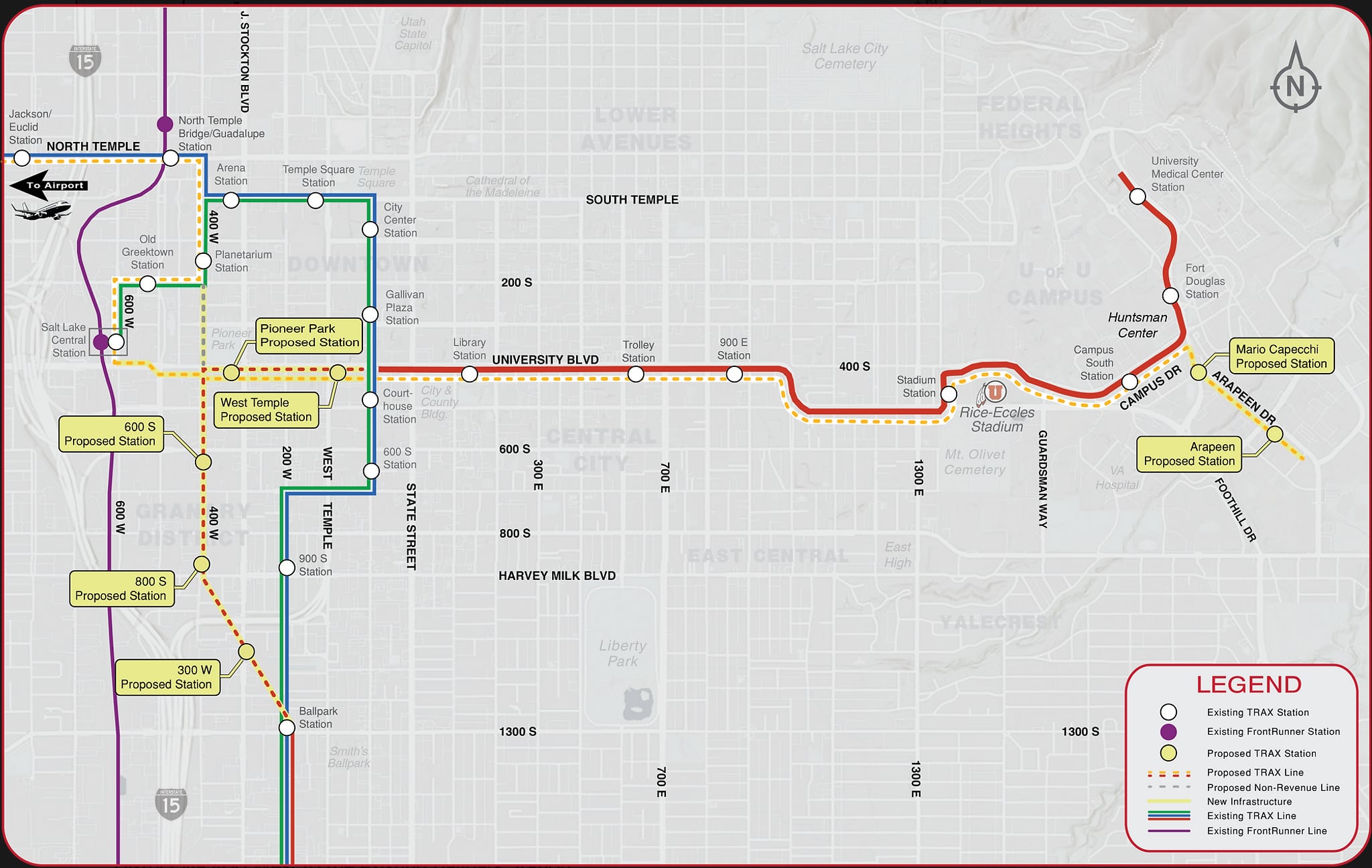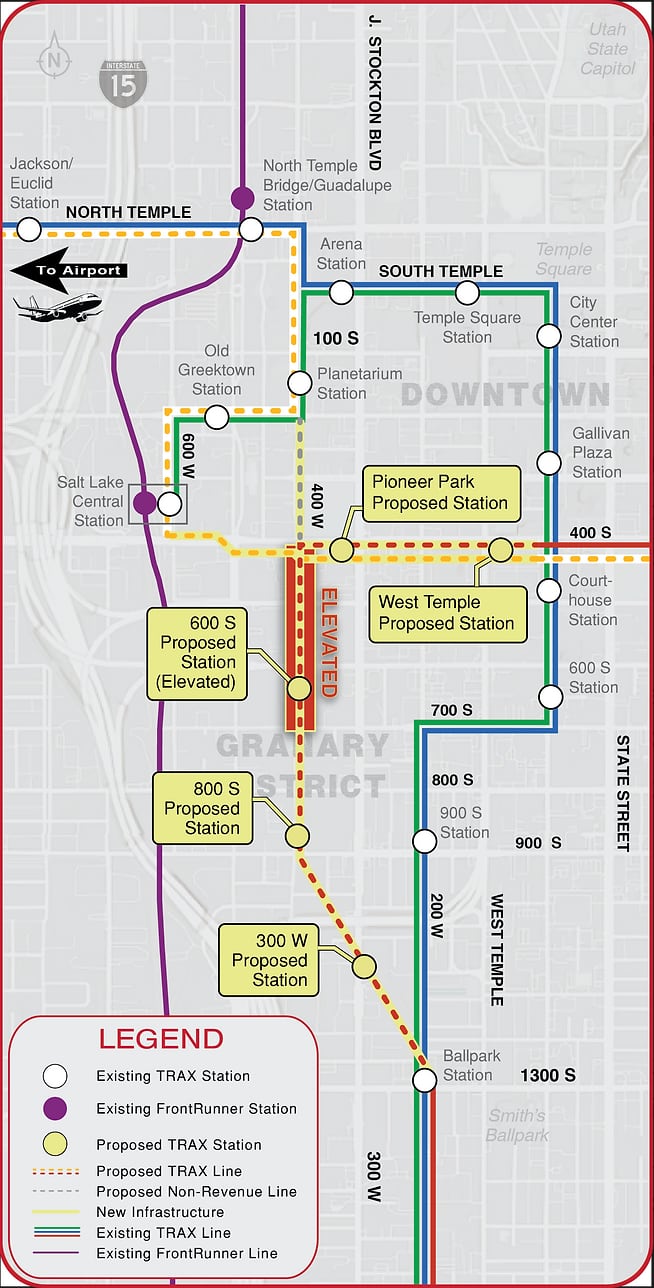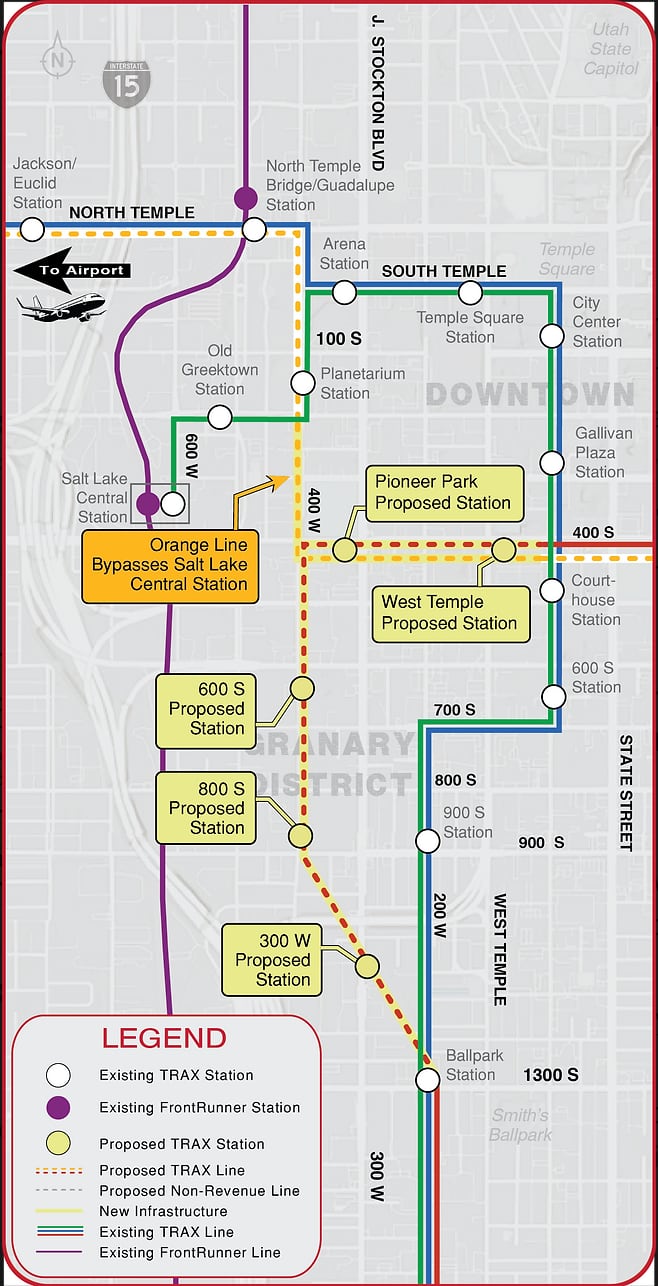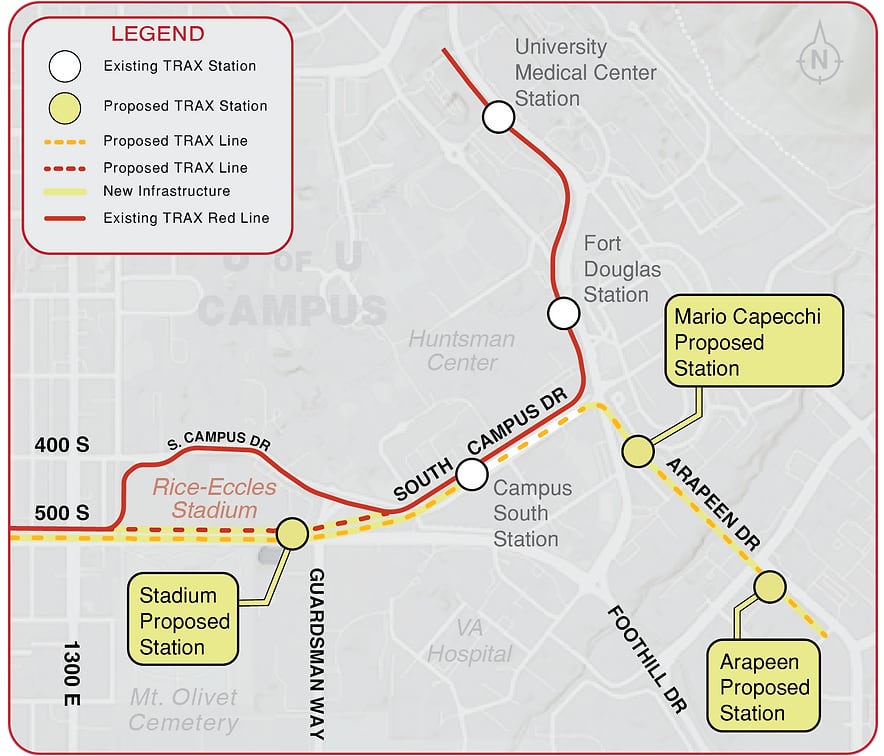A new TRAX line will connect Salt Lake City International Airport to the University of Utah campus by 2030.
The exact route the new Utah Transit Authority “orange” line will travel won’t be selected until August. But right now, there are four options drawn up.
The public can comment on the design options through May 1, though transit times and cost estimates aren’t yet available for all the proposed routes.
Orange line option No. 1
In UTA’s first proposed design, the orange line would extend from the campus to the airport via the existing Salt Lake Central Station.
This plan would require new double-tracking along 400 South, from 600 West to Main Street, according to a feasibility study conducted in 2021.

The route would also include four 90-degree turns, which slow trains down and increase travel time. The turns would lie between 500 West and 400 West to connect the route with Salt Lake Central Station.
Alex Beim, UTA’s manager of long-range and strategic planning, acknowledged that the slower speed would be a “trade-off.” But the concept would provide greater connectivity, due to anticipated development in the Rio Grande District.
The scenario would also realign the existing TRAX red line from 400 West to the Ballpark Station to serve the Granary District, according to the website for UTA’s Techlink study, which will determine the final design.
And it would move the blue line’s westernmost stop to the Salt Lake City airport instead of Salt Lake Central Station. Conversely, the green line’s westernmost stop would become Salt Lake Central Station instead of the airport.
This option seems to be getting the most community support, Beim said.
“The [feedback] responses indicate excitement about a direct connection from the airport to the University of Utah and about a new connection to Research Park,” UTA spokesperson Carl Arky wrote in an email.
Option No. 2
UTA’s second proposed design would be relatively similar, but would instead elevate the TRAX red line on 400 West, between 400 South and 700 South, according to Techlink website.

Option No. 3
The third proposed route seems to be the second-most popular concept, according to feedback so far, Beim said.
This concept would minimize the amount of turns for the orange line because the route would bypass Salt Lake Central Station, according to the Techlink study.
Otherwise, the route matches the first proposed design, including realignment for the red line to serve the Granary District, and changes to the westernmost destinations for the green and blue lines.

Option No. 4
UTA’s fourth concept proposes some of the most changes to the system.
This design would have the new orange line run along 500 South, to the south of Rice-Eccles Stadium, before reconnecting with South Campus Drive.
The concept would also change the location of the stadium’s TRAX station and add two new TRAX stations along Arapeen Drive.

Project timeline
After the public comment period ends May 1, UTA plans to refine a preferred concept by the end of August.
In the meantime, the agency plans to compile more data on ridership projections, cost estimations and travel time for each scenario.
UTA will then open another comment period — with that data available — sometime this summer, said Patti Garver, Techlink TRAX project manager.
“All of the options have a sort of trade off — you gain something, but you lose something else,” Beim said. “And then comparing them, and working with our partners — and certainly also considering public input that we’ve received — [we will] make a selection and determine what the course forward would be.”
The Techlink study is funded through grants from the U.S. Department of Transportation. After a design concept is selected, the project will go through a federally required environmental analysis phase to determine environmental impacts.
That phase will take at least a year, during which officials will determine how frequently the future train will run, Garver said. It will likely be funded by the Department of Transportation’s congestion mitigation and air quality program.
Project development would then begin in the next year or two, because you can begin development while still in the environmental phase, Garver said.
Beim noted that the possibility of Salt Lake City hosting the 2034 Winter Olympics will “do a lot to accelerate the progress of this project,” though plans were already in the works — Olympic Games or not.
UTA executive director Jay Fox projects the orange line will start service by 2030.
“There’s quite a lot of development and new folks and new housing moving into both the west, towards where Salt Lake Central [Station] is, as well as all along 400 South and North Temple,” Beim said.
“Those areas are rapidly growing,” Beim continued, “and I think this will be great for helping access to opportunity and those areas.”
























